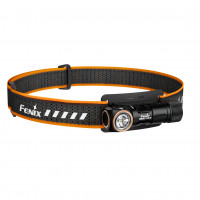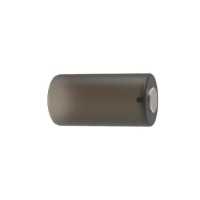A History of Caving Gear
Exploring the fascinating underworld of caves has been a part of human history for centuries. However, it wasn't until the 20th century that we began to see significant advancements in caving equipment. Let's embark on a journey through time to understand the evolution of caving gear.
The Early Days: Heavy Gear and Humble Beginnings
The initial phase of modern caving in the 20th century was characterized by the use of heavy gear. Iron ladders served as the primary tool for cave exploration. As durable as they were, these iron ladders were heavy, susceptible to rust, and challenging to transport.
Additionally, cavers were clad in heavy woolen clothes, which, while warm, were bulky and absorbed a lot of water. Coupled with the use of large-diameter hemp ropes that were equally heavy, these early days of caving presented a physically demanding endeavor.
Lighting was another challenge for early cavers. Acetylene gas lamps were common, providing an often-dim light and requiring careful handling due to their flammable nature.
1930s to 1970s: Fernand Petzl and the Climbing Influence
In the mid-20th century, a revolution in caving equipment began, largely driven by individuals like Fernand Petzl. Petzl, an active caver and climber, along with his contemporaries from the climbing community, saw the potential for adapting climbing gear for caving. They brought new techniques and tools into the caving realm, particularly during their explorations of the famous Dent de Crolles cave system in the 1930s and 1940s.
By the 1970s, Petzl had developed and introduced innovative tools such as lighter weight helmet-attachable headlamps and ascenders and descenders designed for Single Rope Technique (SRT). These inventions made caving more efficient and significantly less labor-intensive.
Synthetic Materials and the Advent of SRT
As the 20th century progressed, a considerable shift in caving attire occurred. The previously used heavy woolen clothes were replaced by synthetic, lightweight materials like nylon and polyester. These materials gave us new caving suits which were more comfortable, resistant to mildew, and quicker to dry, providing practical alternatives for cavers.
Additionally, the transition from heavy hemp ropes to lighter, more robust ropes, coupled with the adoption of the Single Rope Technique (SRT) in the 1980s, transformed the way cavers explored. This technique, using a single static rope with the aid of ascenders, descenders, and harnesses, proved safer and more efficient.
From Bulky Batteries to Lightweight LEDs
In terms of lighting, the move from acetylene gas lamps to electric bulbs brought about a significant change. Although early electric lights required heavy batteries, they were a considerable improvement over gas lamps. The subsequent shift to lightweight LED caving headlamps in recent years has further improved visibility while reducing weight for cavers.
The Present and Future: High-Tech Innovations
Today, we continue to see advancements in caving gear. From the high-tech LED lights to digital mapping tools and specialized drones for cave exploration, technology is continually enhancing the caving experience.
The evolution of caving gear is a testament to human ingenuity and the desire to explore the unknown safely and efficiently. From the humble beginnings of heavy iron ladders and woolen clothes to the sophisticated and practical equipment of today, caving has come a long way. As technology continues to advance, we can look forward to further innovations in caving gear.
Related Products
Landjoff Cordura Plus Caving Oversuit - Red
Landjoff's CORDURA PLUS caving suit in red is made from coated CORDURA 500 by DuPont. It has a ..
£114.99 £95.83
Cordura Plus Caving Oversuit - Blue
Landjoff's CORDURA PLUS caving suit is made from coated CORDURA 500 by DuPont. It has a gr..
£114.99 £95.83
ActionStash Caving Headlamp & Battery
Our affordable caving headlamp. Featuring 5 variable brightness levels for maximising your battery l..
£34.99 £29.16
Typhoon Caving Undersuit
Typhoon's Lightweight Caving Undersuit offers a great thermal underlayer for caving while main..
£43.99 £36.66
Fenix HM65R Headlamp
The gold standard for many a caver, this popular model of caving headlamp from Fenix provides 1400 l..
£89.99 £91.99 £74.99
Fenix HM70R Caving Headlamp
Fenix's latest higher-end caving headlamp offering, now powered by a 21700 battery with 5000mAh capa..
£99.99 £102.99 £83.33
Cordura Plus Caving Oversuit - Black
Landjoff's CORDURA PLUS caving suit in black is made from coated CORDURA 500 by DuPont. It has ..
£114.99 £95.83
Cordura Plus Caving Oversuit - Yellow
Landjoff's CORDURA PLUS caving suit in yellow is made from coated CORDURA 500 by DuPont. It has..
£114.99 £95.83
Black Diamond Half Dome Helmet - Rain
The Half Dome has long been a staple for cavers and climbers worldwide. Now redesigned, the helmet f..
£47.99 £39.99
K2A Lightweight Oversuit (Red & Teal)
K2Action's lightweight caving oversuit offers an affordable and extremely flexible outer layer for c..
£89.99 £74.99
K2A Lightweight Oversuit (Teal & Red)
K2Action's lightweight caving oversuit offers an affordable and extremely flexible outer layer for c..
£89.99 £74.99
Landjoff PVC Caving Oversuit
The Landjoff LONG LIFE PVC Caving oversuit is made from soft, flexible and durable PVC fabric...
£118.99 £99.16
21700 Fenix Battery - 5000 mAh
Fenix ARB-L21-5000 V2 is a Premium Quality High Capacity 21700, 5000mAh Lithium - ion battery from F..
£26.99 £22.49
Black Diamond Half Dome Helmet - Denim
The Half Dome has long been a staple for cavers and climbers worldwide. Now redesigned, the helmet f..
£47.99 £39.99
Black Diamond Half Dome Helmet - Slate
The Half Dome has long been a staple for cavers and climbers worldwide. Now redesigned, the helmet f..
£47.99 £39.99
Black Diamond Half Dome Helmet - Octane
The Half Dome has long been a staple for cavers and climbers worldwide. Now redesigned, the helmet f..
£47.99 £39.99
Women's Black Diamond Half Dome Helmet - Alloy
Featuring the same construction as our popular Half Dome model, the Women's Half Dome offers design ..
£47.99 £39.99
Women's Black Diamond Half Dome Helmet - Green
Featuring the same construction as our popular Half Dome model, the Women's Half Dome offers design ..
£47.99 £39.99
21700 KeepPower Battery - 5500 mAh
These high-capacity KeepPower 21700 battery cells work well for caving lighting, featuring all the e..
£14.99 £12.49
Fenix HM23 Headlamp
Fenix HM23 V2.0 head torch upgrades the hugely popular original model with added features and perfor..
£36.99 £30.83
18650 KeepPower Battery - 3800 mAh
These high-capacity KeepPower 18650 battery cells work well for caving lighting, featuring all the e..
£12.99 £10.83
KeepPower K1 Li-Ion and Ni-MH Battery Charger
KeepPower lithium ion battery charger, which supports a variety of battery sizes, in a basic and cos..
£7.99 £6.66
KeepPower L1 Intelligrant Li-Ion/Ni-MH Battery Charger
KeepPower intelligent lithium ion battery charger, which supports a variety of battery sizes. Displa..
£9.99 £8.33
18650 to 21700 battery adaptor
Pop this on the top of an 18650 battery to allow it to be used within a device that takes a 21700 ba..
£2.49 £2.08
Fenix HM71R Caving Headlamp
Fenix's latest higher-end caving headlamp offering, powered by a 21700 battery with 5000mAh capacity..
£104.99 £87.49
ArmyTek Wizard C2 Caving Headlamp
ArmyTek have a great reputation for producing solid, well supported and good value-for-money caving ..
£57.99 £48.33
ArmyTek Wizard C2 Pro Caving Headlamp
ArmyTek are a German company with a great reputation for producing solid, well supported and good va..
£69.99 £58.33
ArmyTek Wizard C2 Pro Max Caving Headlamp
ArmyTek are a German company with a great reputation for producing solid, well supported and good va..
£89.99 £74.99
ArmyTek Wizard C1 Pro Caving Headlamp
ArmyTek have a great reputation for producing solid, well supported and good value-for-money caving ..
£44.99 £37.49
ArmyTek Bike Mount for Wizard headlamps
ArmyTek have a great reputation for producing solid, well supported and good value-for-money caving ..
£9.99 £8.33
21700 KeepPower Battery - 6000 mAh
These super high-capacity KeepPower 21700 battery cells work well for caving lighting, featuring all..
£15.99 £13.33































